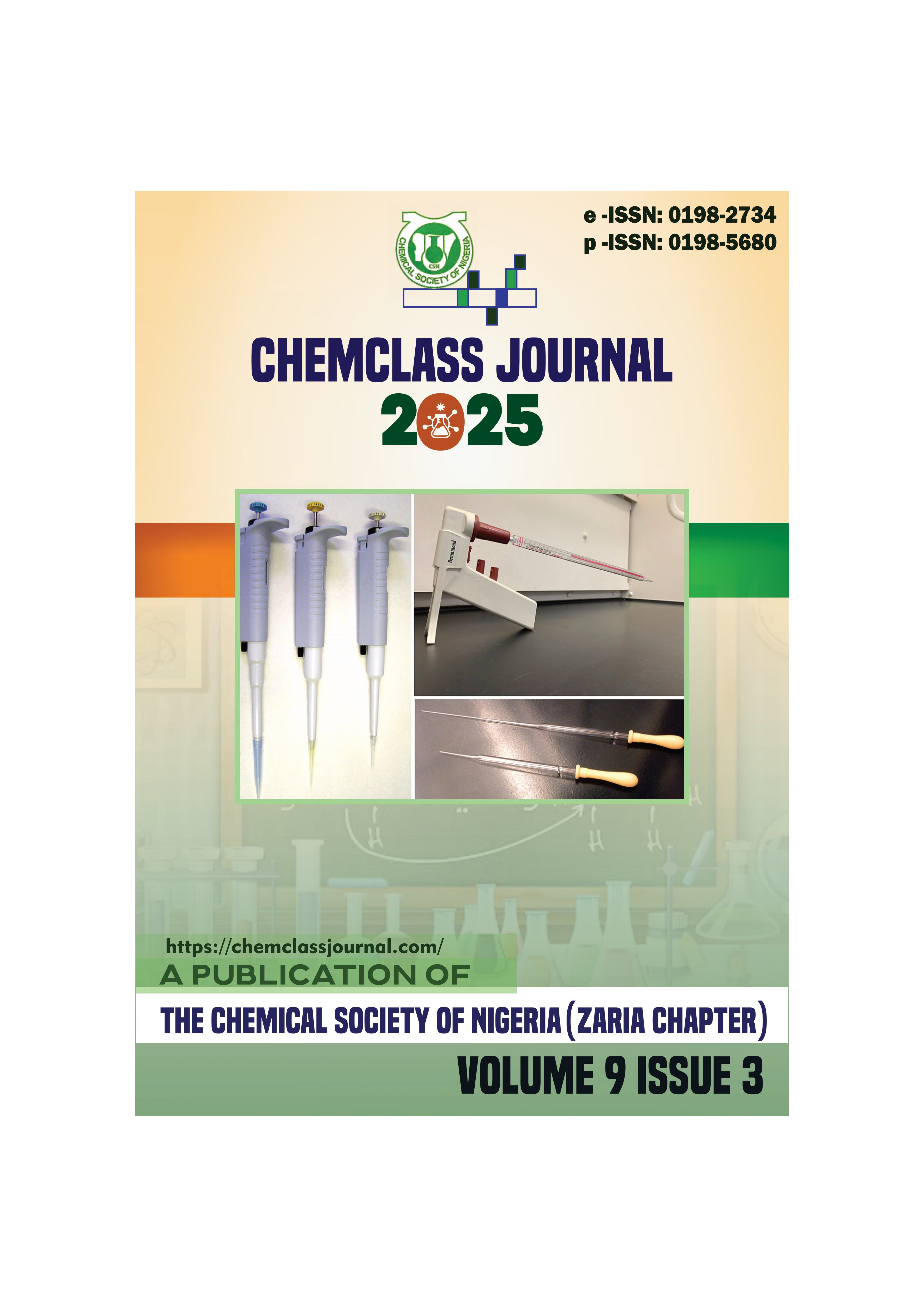Bioactive Steroids from Heeria insignis Leaf: Isolation, NMR-Based Structural Elucidation, Antimicrobial Profiling, and Molecular Docking against Plasmodium falciparum
DOI:
https://doi.org/10.33003/Keywords:
Molecular docking , chromatographic purification , structural elucidation , P. falciparumAbstract
Despite continued researches, long-term use of antimalarial drugs has decreased their effectiveness because of increasing parasite resistance. This study accesses the efficacy of steroidal alkaloids from the leaf of Heeria insignis against Plasmodium falciparum parasite. Cold maceration was used for extraction. Chromatographic purification facilitated the isolation of four pure compounds, and their structural elucidation was performed using ¹H and ¹³C NMR spectroscopy. Molecular docking investigations were conducted on these isolated ligands using the PDB structure 1ME6. Antimicrobial studies were performed using the well diffusion method, and the minimum inhibitory concentration (MIC) was determined. The dichloromethane (DCM) extract exhibited a significant antimicrobial effect, with inhibition zones ranging from 22 to 32 mm and an MIC of 0.625 mg/mL against MRSA, Bacillus subtilis, and Candida albicans. Molecular docking studies showed that Mefloquinine had a binding energy of -7.9 kcal/mol, while compound A3 demonstrated the lowest binding energy of -8.2 kcal/mol, indicating superior receptor interactions. Key target residues involved in these interactions included SER, ILE, VAL, TYR, and GLY, which play a crucial role in inhibiting Plasmodium falciparum-associated infections. The study highlights the potential of isolated compounds, particularly A3, as promising antimalarial agents due to their strong molecular interactions with key target residues. The potent antimicrobial activity of the DCM extract further supports its potential in combating infectious diseases.





 ChemClass Journal
ChemClass Journal
